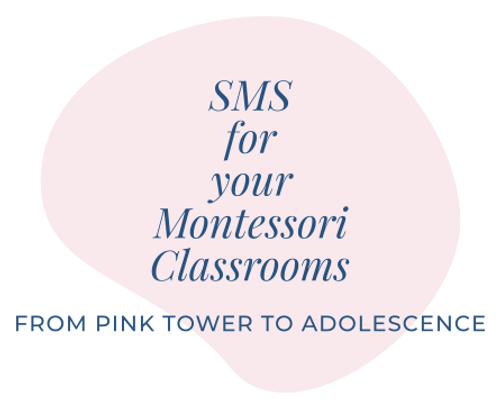Bridging the Gap: Partnering with Parents While Staying Grounded in Montessori Practice
- Anne Slamkowski
- Oct 20
- 4 min read

Maria Montessori wrote, “The greatest sign of success for a teacher… is to be able to say, ‘The children are now working as if I did not exist.”
But in today’s classrooms, that balance can feel fragile. Teachers are navigating a new reality—one where parents are more present, more vocal, and more anxious than ever before. Since the pandemic, parents have been closer to their children’s learning through technology, and many want to stay engaged. While this involvement often comes from care, it can unintentionally blur the boundaries of the classroom and leave teachers unsure how to respond.
As Montessori educators, we can hold space for that concern while staying confident in our role as guides. Bridging this gap takes empathy, clarity, and support from both teachers and administrators.
When Concern Turns into Exhaustion
Most parent interactions are positive and collaborative. But when communication becomes constant or emotionally charged, teachers can experience what researchers call relational overload, a kind of fatigue that comes not from instruction, but from the energy required to maintain dozens of intense adult relationships.
A 2023 Education Week survey found that nearly 60% of teachers reported parent demands as a factor in burnout, particularly when they felt unsupported by school leadership. Montessori teachers, already tasked with observation, differentiation, and guiding independence, may feel stretched to their limit when managing frequent or critical communication.
This exhaustion isn’t from lack of care; it’s from caring deeply about both students and parents, while trying to preserve a sense of calm in the classroom.
Bridging with Research-Based Practices
Fortunately, research gives us clear direction. Studies from the Harvard Family Research Project and Johns Hopkins University (Epstein, 2019) emphasize that the healthiest family–school partnerships are built on trust, consistency, and shared purpose, not constant access or reactive communication.
Here’s what that looks like in practice:
Communicate proactively. A brief weekly update or classroom reflection helps parents feel informed without overstepping.
Explain the why. Share Montessori principles behind your methods: why productive struggle is valuable, why students work independently, and how self-assessment fosters ownership.
Use observation language. Replace emotion with evidence: “I’ve noticed your child focuses best when allowed uninterrupted time.” Facts build credibility and trust.
Invite, don’t defend. Phrases like “Let’s look at how we can support your child together” keep the tone collaborative.
Know your boundaries. Respectfully remind parents that communication works best when it supports student independence and aligns with class norms.
These practices reflect Montessori’s belief that education is a partnership in growth between the child, the teacher, and the family.
When Parents Cross the Line
Occasionally, parent involvement moves from partnership to pressure, like frequent messages, demands to alter lessons, or emotional appeals for special treatment. When this happens, teachers can feel cornered or devalued.
Montessori’s response to such tension would be observation and calm leadership. Rather than react, pause. Ask:
What is the parent truly seeking?
What boundaries will help me protect the prepared environment for all children?
What needs are not being met of this child in the classroom through my observations?
If the dynamic continues to cause stress, involve administrators early. A collaborative approach prevents isolation and ensures the parent feels heard while the teacher remains supported.
The Role of Administration: Building the Bridge Together
Bridging the gap isn’t just a teacher’s responsibility—it requires administrative scaffolding.
Effective school leaders:
Provide clear communication protocols for both teachers and parents (e.g., email timelines, meeting structures).
Offer parent education sessions on Montessori philosophy and adolescent development to align expectations.
Create a culture of mutual respect by publicly affirming teacher professionalism and ensuring concerns are handled through transparent, supportive channels.
When administrators actively support both sides, they create what Montessori called a prepared environment for adults, an atmosphere where communication can happen calmly and respectfully.
A Montessori Reminder
At its best, Montessori education is a shared journey between home and school. Parents bring deep insight into their child’s heart; teachers bring trained observation and structure. Both perspectives are needed, and both deserve compassion.
When teachers lead with confidence and empathy, and when parents feel seen and informed, trust begins to rebuild.
You are not simply teaching students, you are guiding families toward understanding how learning really works.
In moments of tension, remember: parents are not the opposition; they are potential allies still learning to trust the process. They are also a key source of information that teachers need. The observation pieces that are missing: what is going on at home.
Bridging the gap means staying calm when emotions rise, standing firm in your expertise, and inviting parents to walk alongside you, not ahead of you.
Montessori called for education that serves peace. Sometimes, that peace begins with a single, thoughtful conversation, one rooted in respect, clarity, and care.
References
Montessori, Maria. Education and Peace. 1949.
Montessori, Maria. From Childhood to Adolescence. 1948.
Epstein, Joyce. School, Family, and Community Partnerships. Corwin, 2019.
Harvard Family Research Project. Family Engagement for Continuous Improvement. 2018.
Education Week. “Teachers Say Parent Demands Contribute to Burnout.” 2023.




Comments